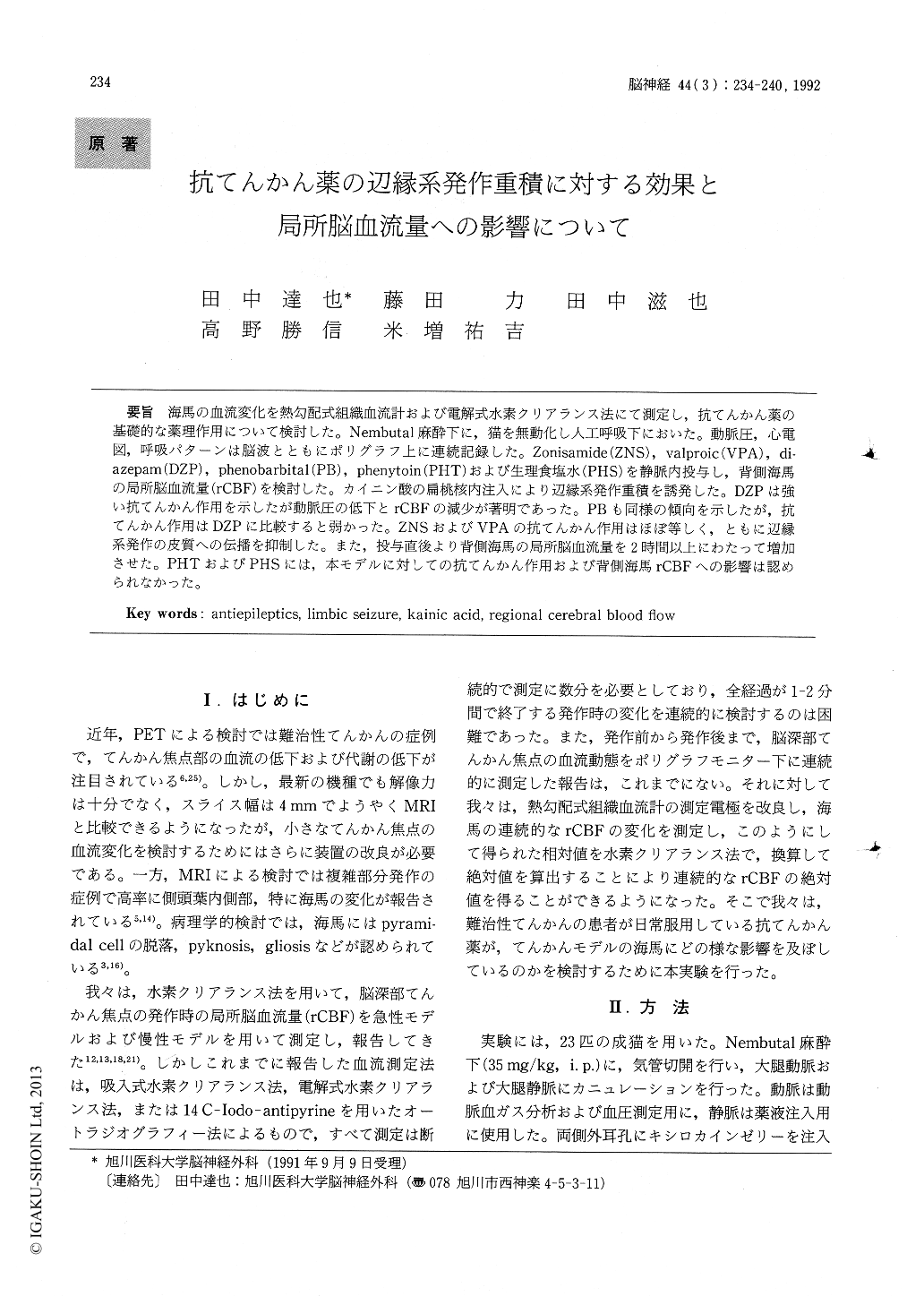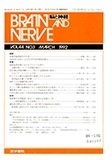Japanese
English
- 有料閲覧
- Abstract 文献概要
- 1ページ目 Look Inside
海馬の血流変化を熱勾配式組織血流計および電解式水素クリアランス法にて測定し,抗てんかん薬の基礎的な薬理作用について検討した。Nembutal麻酔下に,猫を無動化し人工呼吸下においた。動脈圧,心電図,呼吸パターンは脳波とともにポリグラフ上に連続記録した。Zonisamide(ZNS),valproic(VPA),di—azepam(DZP),phenobarbital(PB),phenytoin(PHT)および生理食塩水(PHS)を静脈内投与し,背側海馬の局所脳血流量(rCBF)を検討した。カイニン酸の扁桃核内注入により辺縁系発作重積を誘発した。DZPは強い抗てんかん作用を示したが動脈圧の低下とrCBFの減少が著明であった。PBも同様の傾向を示したが,抗てんかん作用はDZPに比較すると弱かった。ZNSおよびVPAの抗てんかん作用はほぼ等しく,ともに辺縁系発作の皮質への伝播を抑制した。また,投与直後より背側海馬の局所脳血流量を2時間以上にわたって増加させた。PHTおよびPHSには,本モデルに対しての抗てんかん作用および背側海馬rCBFへの影響は認められなかった。
Continuous monitoring of regional cerebral blood flow (rCBF) of the hippocampus was made during limbic seizure status in cats by means of a heat clearance method with a calibration method by an electrolytic hydrogen clearance method. A stereo-taxic operation was made under Nembutal anesthe-sia. Local anesthetics were applied to the painful area. Femoral artery and vein were cannulated and served for arterial blood pressure monitoring and drug injection, respectively. Tracheostomy was made and ventilated artificially. A double cannula was inserted to the amygdala and fixed to the skull with a dental cement. Electrodes for heat clearance method, electrolytic hydrogen clearance method and EEG recording were inserted to the dorsal hippocampus. Limbic seizure status was induced by kainic acid microinjection (2 ug) into amygdala via implanted cannula. Baseline rCBF was measured in each cats. Continuous monitoring of rCBF was made before and after intravenous administrationof anticonvulsants such as zonisamide (ZNS), val-proic acid (VPA), diazepam (DZP), phenobarbital (PB) and phenitoin (PHT). Physiological saline (PHS) was injected for controls. Injection of DZP resulted in strong seizure suppression with decrease of arterial blood pressure and hippocampal rCBF. Intravenous PB demonstrated analogous action with DZP with a mild anticonvulsant effect. Intra-venous ZNS or VPA resulted in inhibition of seizure propagation from limbic system to cortex. How-ever, these drugs augmented rCBF of the hippocampus more than 2 hours after administra-tion. PHT and PHS demonstrated no anticonvul-sant effect nor rCBF change in the present study.

Copyright © 1992, Igaku-Shoin Ltd. All rights reserved.


